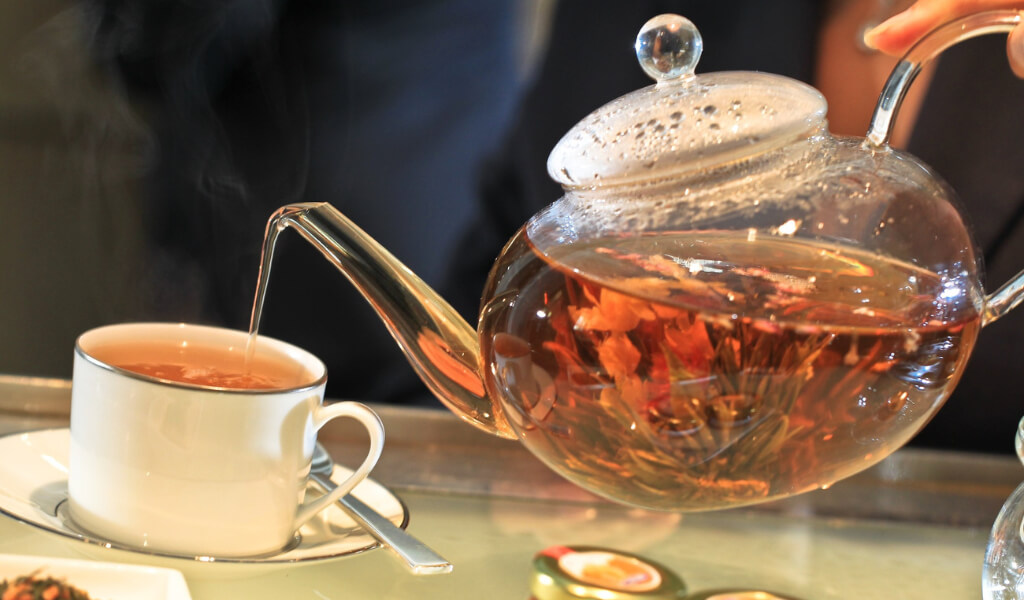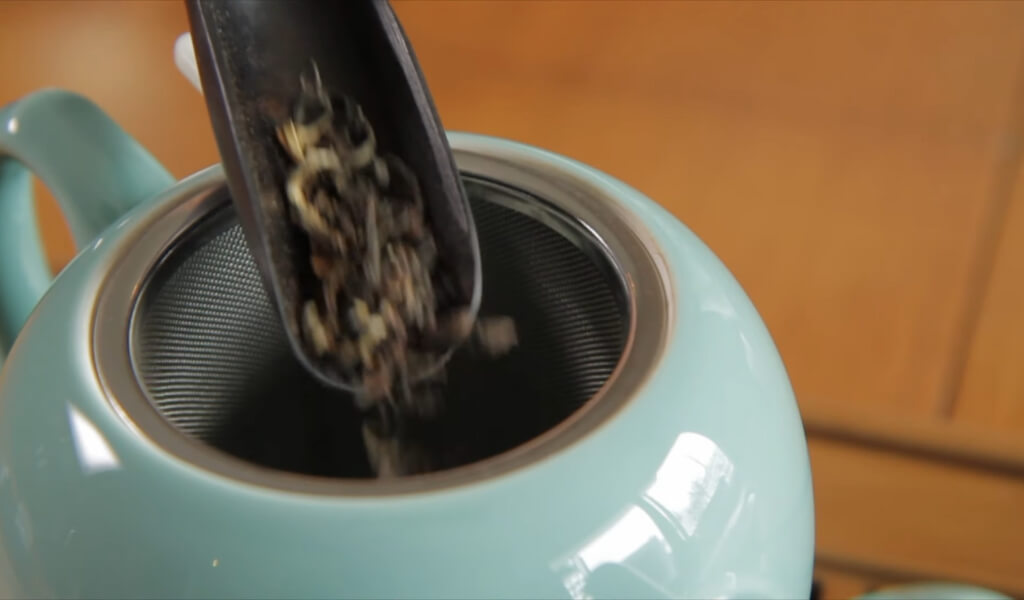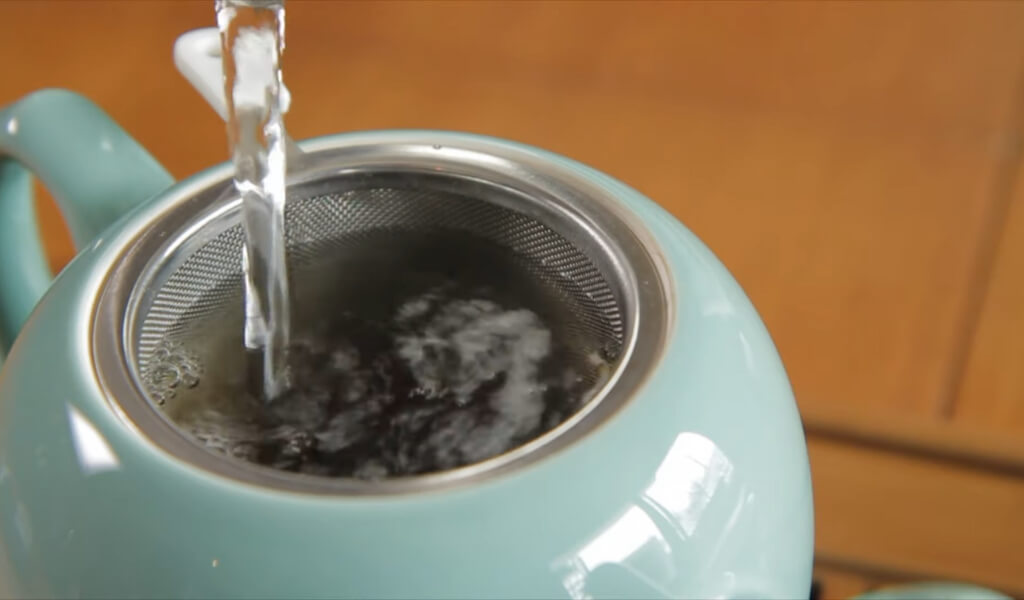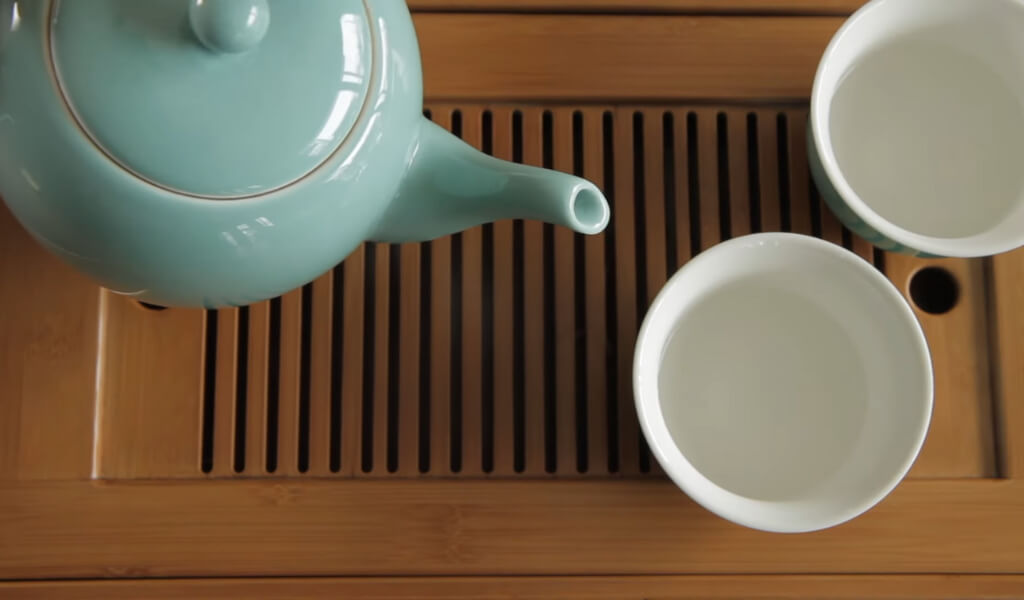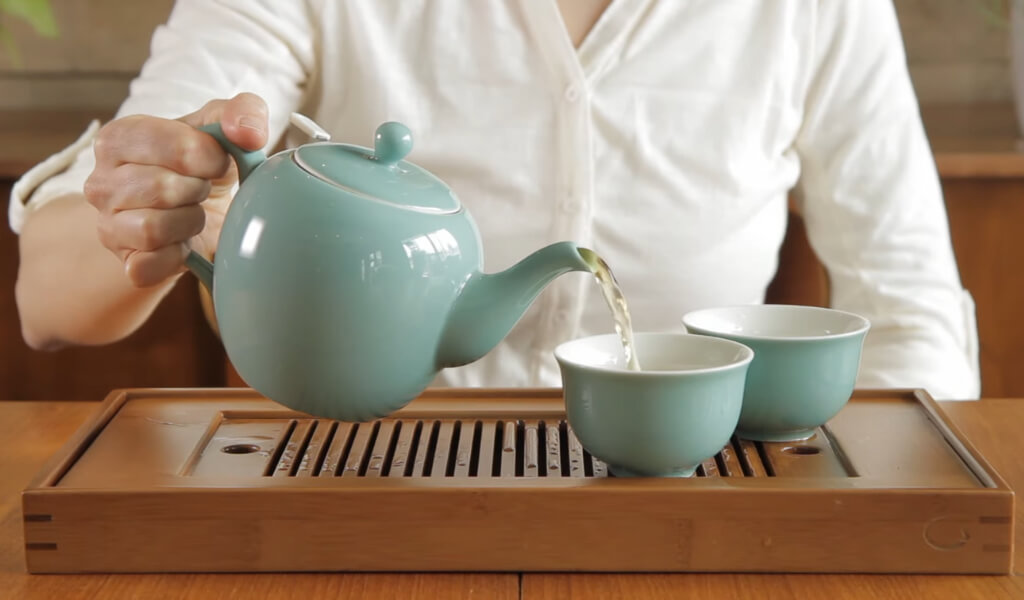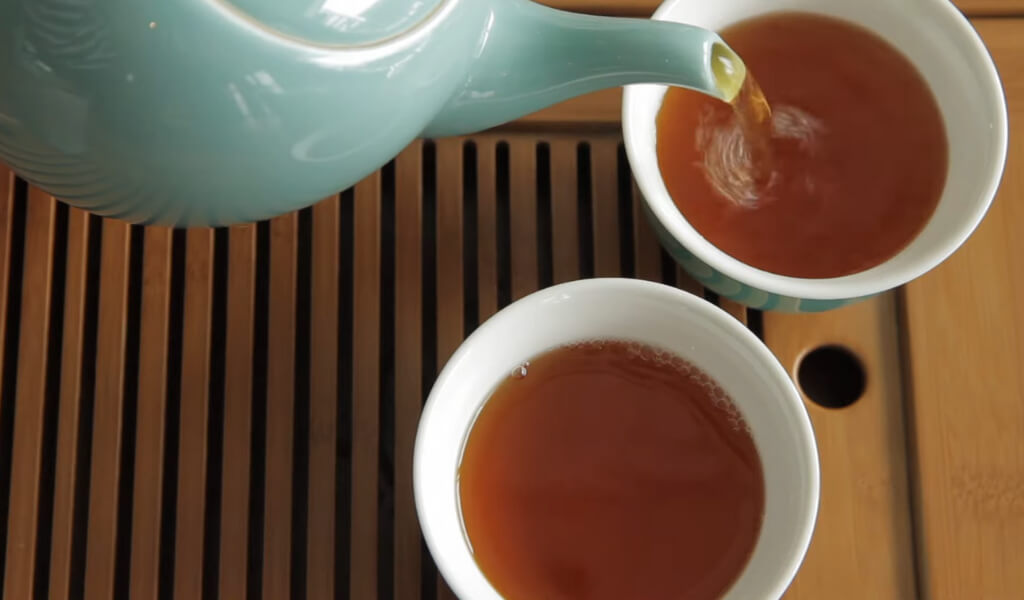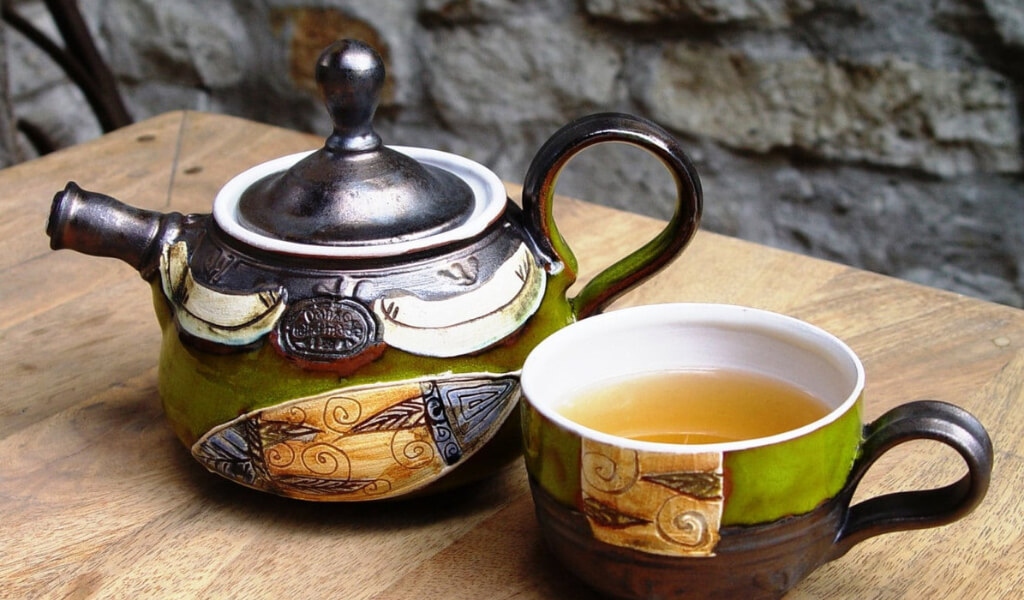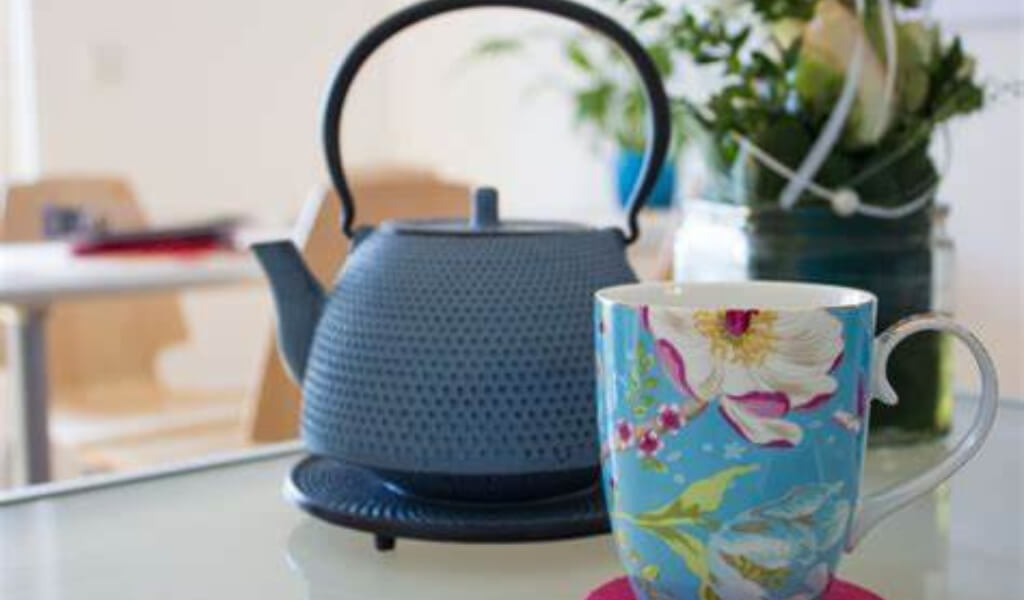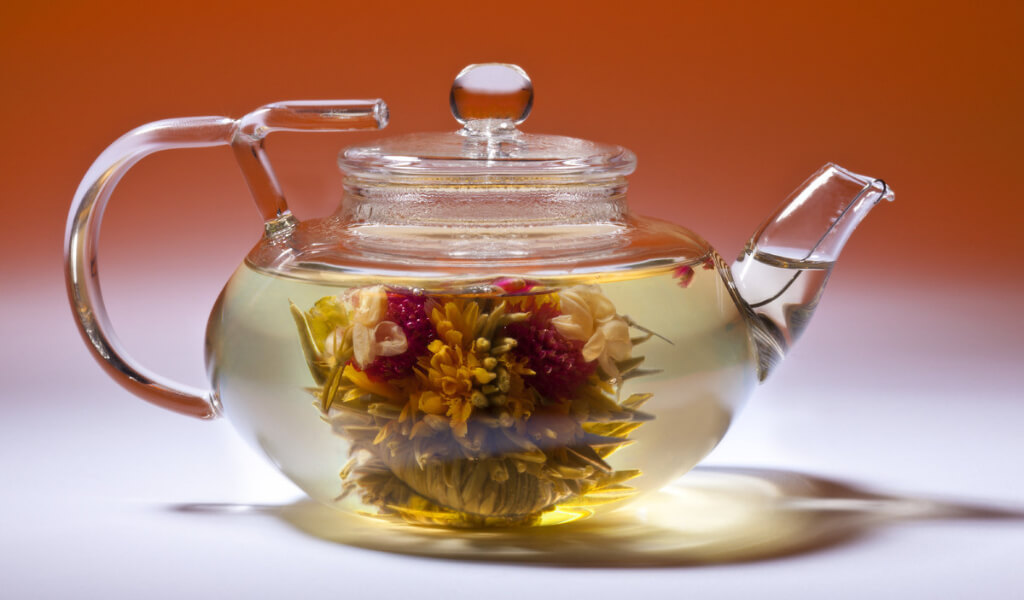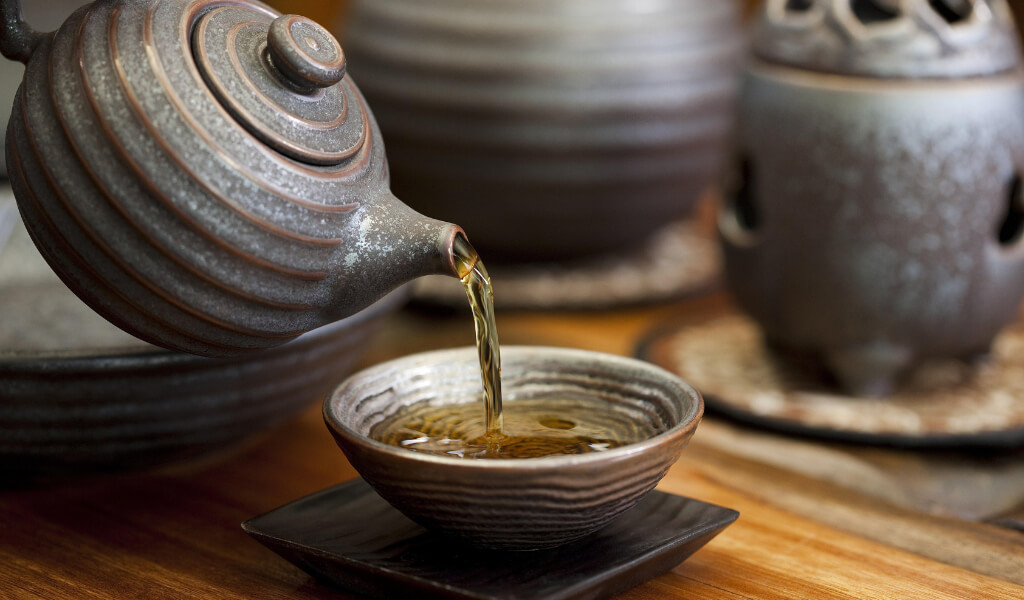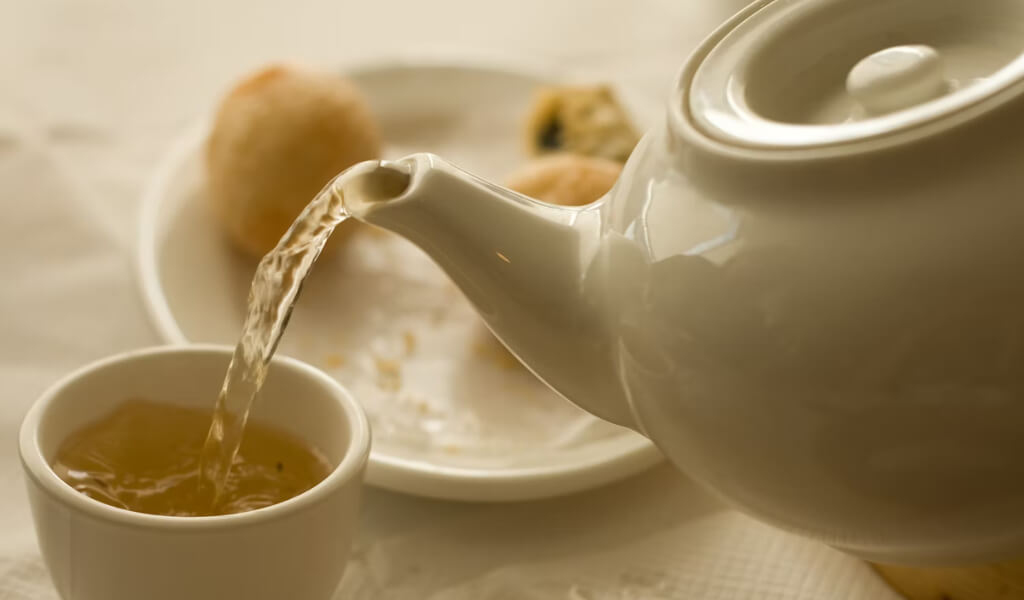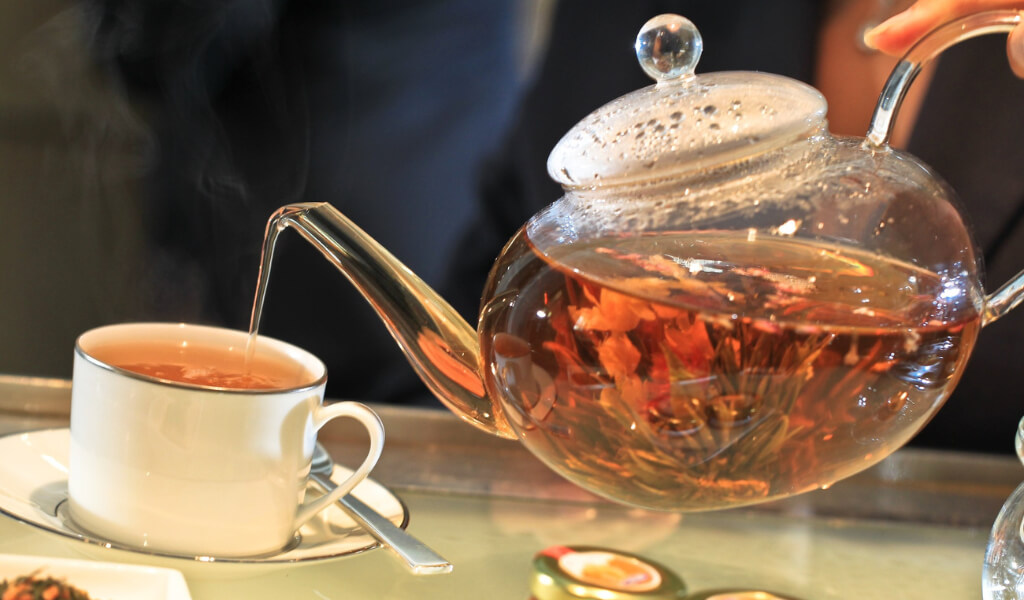Have you ever wondered how to make Tea in a Teapot? Using a Teapot was as simple as tossing some tea leaves and adding hot water.
I couldn’t have been more wrong.
Much like a Sommelier savours wine, tea connoisseurs worldwide appreciate the art of brewing the perfect cup of tea. It’s not merely about the tea but also the preparation ritual.
And trust me, once you master the nuances of using a Teapot, your cup of tea will taste even more delightful. The difference is just as clear as night and day.
How to make tea in a Teapot step-by-step
Here are the 5 steps on how to make tea with Teapot you should consider:
Step 1 – Heat the Water
Warm the water to an exact temperature to pre-warm the Teapot.
When you want to enjoy a comforting cup of tea, say a classic English Breakfast or a delicate Japanese Sencha, you need to start by heating water to the exact temperature.
I recommend using pure spring or glacier-fed water. Water temperature is vital in brewing different teas, such as Green, Black, Oolong, or White. Always heat your water using a stove or an electric kettle, not a microwave.
Step 2 – Pouring Tea to Teapot
Add tea to the Teapot using the ratio of 1 teaspoon of tea leaves per cup of water.
Whether you have a classic English Brown Betty or a Japanese Tetsubin, measure your tea leaves – about 1 teaspoon of leaves per cup of water.
Select the right infusion method based on your types of tea, like herbals (think Chamomile or Rooibos) or traditional teas (such as Darjeeling or Earl Grey).
This could be an external strainer, internal infuser, tea-to-go filter, or a simple teabag.
Step 3 – Steeping Tea
Pour the hot water over your tea leaves and let them steep according to the instructions.
Whether steeping a robust Indian Assam or a fragrant Chinese Jasmine Pearl, steeping time is crucial to extracting the ideal flavour balance.
Step 4 – Removing the Tea Leaves
Once the tea has steeped correctly, separating the leaves from the liquid is time.
This applies whether you use large leaves like Oolong or smaller ones like Green tea. Extended contact with water can cause over-extraction, leading to bitterness in your cup.
Step 5 – Savoring the Moment
Take your time to enjoy its character and aroma
If you prefer, add your favourite extras, like local honey or a splash of milk.
Enjoy your perfect cup of tea in your favorite spot, perhaps a cozy armchair or a sunny spot in the garden. Here’s to the perfect tea moment!
Read More:
- Can you make coffee with a tea infuser? Detailed process & tips for newbies
- Here is My ultimate guide on Type Of Teapot
- How to clean a Teapot – Videos and detailed illustrations
- How To Remove Tea Stains? Videos and images with detailed instructions
How do you make tea with teabags in a Teapot?
Even for a loose-leaf tea enthusiast like me, I acknowledge the undeniable convenience of tea bags. If you’re making tea for one, just pop a tea bag into your cup, let it steep for two to five minutes – yes, the box instructions are your friend here.
When using a Teapot, the typical guideline is to use one tea bag per cup. For instance, if you’re making tea for six people, you’d usually use six tea bags. However, I’ve discovered that you can cut down on the number of tea bags by approximately 30% and still make a delightful pot of tea. So, for six cups, you can get by with just four tea bags. Feel free to experiment and find your ideal mix. Enjoy your Teapot brewing adventure!
Considering Some Tips To Pick A Teapot
The world of Teapots is vast, with many amazing choices: cast iron, glass, ceramic, porcelain, aluminum, silver, and even stainless steel. It’s a lot, I know!
In England, glass, ceramic, or porcelain teapots are popular among tea enthusiasts, while in the USA, stainless steel or glass teapots are preferred for their practicality.
In Japan, cast-iron teapots, called tetsubin, are favored for their exceptional heat retention.
On the other hand, in China, many opt for purple clay teapots or Yixing teapots to enhance the flavor of their tea.
Selecting a Teapot is indeed a personal journey. Here’s my take on a few favourites:
- Glass Teapots are great for visual teas like blooming teas. They maintain a good temperature and allow you to appreciate the beauty of tea leaves unfurling.
- Ceramic Teapots are classic, holding heat well. I often use mine for robust black teas like Darjeeling or English Breakfast, which need a hotter brewing Teapot temperature.
- Cast iron Teapots are durable and excellent at retaining heat for longer periods. I recommend them for delicate green or white teas that can be steeped multiple times.
- Clay Teapots, particularly Yixing clay from China, are valued for their porous nature. I use mine exclusively for Oolong, as the clay enhances its complex flavours.
The best Teapot for you will match your tea-drinking habits, aesthetic preferences, and the types of tea you most enjoy.
How Do Teapots Work?
A classic Teapot features a lid for retaining the tea’s warmth, a handle for safe serving, and a spout for pouring into cups. Contemporary Teapots also include a filter to strain the infusion, preventing any loose leaves from entering the cups.
The Teapot lid plays a vital role in preserving heat and locking in the aroma, elevating the tea-drinking experience. Through numerous brewing sessions, I’ve noticed that this simple feature is essential for crafting the ideal, delicious cup of tea we all love.
How To Use Teapot: Tips
Having explored different Teapots, let’s share some practical tips I’ve learned from my tea-brewing adventures.
- Preheating the teapot: I find that running hot water around it before brewing helps eliminate dust, kill potential germs, and warms it up. This little ritual of mine ensures a clean Teapot and helps maintain the water temperature to brew teapot.
- Wiping the Teapot: I quickly wipe it while the pot is still hot. This is because the high temperature slightly expands the pot’s pores, causing water vapour to appear on its surface. It’s a nifty way to keep the Teapot in great condition.
- Refrain from immersing the Teapot in water: Some folks like to pour boiling water over it to keep it warm. But this is optional, especially if you’ve preheated your pot.
- Remembering Teapot properties: Certain Teapots, like ceramic ones, are porous. I’ve found that they can retain the flavor of teas brewed in them. This adds character to some brews, while others might not like the lingering tastes. I clean my Teapot promptly after each use and never with soap to avoid unwanted flavours.
- Handle with care: When using a cast-iron Teapot, I’m always mindful that the handle can get hot, so I use a potholder or a thick cloth to avoid surprises.
- Using the right steeping tools: Putting loose leaves directly in your cup or using a built-in filter depends on your preference. I like my tea clear and use a Teapot with a built-in filter.
These little tips have elevated my tea-brewing process. They may seem simple, but you’ll be surprised by the difference they make.
How Do You Make Tea With Tea Bags?
For a single cup of tea, just use one tea bag and steep it for two to five minutes, adjusting the time according to the tea type. Refer to the directions on the packaging for specifics.
For a big teapot, simply toss in one tea bag per cup you plan to brew. So, for a 6-cup batch, grab 6 tea bags. If you’re looking to economize, reducing it by around 30% is also an option. Using 4 bags for those 6 cups will do the job perfectly.
Conclusion
Steeping your favorite tea in a Teapot isn’t just about drinking tea; it’s a ritual that can be as calming and enjoyable as the tea itself. And, of course, the first thing you should master is how to use a Teapot.
If you have exciting tea stories or questions, drop them in the comments section. We’d love to hear from you!
If you want to delve deeper into the world of tea, these sources might come in handy:
- The Book of Tea – Okakura Kakuzo
- Tea: History, Terroirs, Varieties – Kevin Gascoyne
Looking for the perfect Teapot or want to try out some amazing teas? Here are a few of our favourites:
- Glass Teapot with Infuser – Perfect for watching those beautiful tea leaves unfurl.
- Cast Iron Teapot – Retains heat excellently for a more prolonged steep.
- Sampler Tea Pack – A great way to experiment with different tea types.
Happy tea journey! Thanks for SpiriteaDrinks
FAQs
How Do You Make Sun Tea?
Sun Tea is simple to make. Fill a glass container with water, add 1 tea bag for every 8 ounces, and then place the container in direct sunlight for 3-5 hours. Remember to refrigerate immediately after brewing to prevent bacteria growth.
Can You Put Tea Bags In A Kettle?
Putting tea bags directly into a kettle is not advisable as it can overheat the tea, leading to a bitter brew. Instead, place your tea bag in a cup or teapot, then pour hot water over it for optimal flavour extraction.
Can You Brew Tea In A Coffee Maker?
Yes, you can brew tea in a coffee maker. Just replace the coffee grounds with tea bags or loose tea. However, remember to clean your coffee maker thoroughly beforehand to avoid any residual coffee flavor.
How to make tea in a Chinese teapot?
Making tea in a Chinese teapot, often called gongfu brewing, involves using more tea leaves and less water for shorter steeping times. This method allows for multiple infusions, each revealing a different layer of the tea’s flavor profile.
Do you boil water before putting it in teapot?
Yes, boil your water in a kettle before adding it to your teapot. The exact temperature will depend on the type of tea you’re brewing, with green and white teas requiring slightly cooler water than black or oolong teas.
What is the rule for teapot?
The main rule for a teapot is to match the size of the teapot to the number of people you are serving. A small teapot is ideal for one or two people, while a larger one is suited for serving a group.
What is the correct way of making tea?
The correct tea-making method starts with fresh, cold, filtered water. Bring the water to the correct temperature for your tea type, then pour it over the tea leaves or tea bag and let it steep for the appropriate time.
How to prevent a teapot from dripping?
To prevent your teapot from dripping, try pouring with a smooth and steady stream, starting slow and then speeding up. If your teapot continues to drip, it may be a design issue with the spout, and you might consider getting a different teapot.
What are some common mistakes while using a teapot?
Common mistakes include not preheating the teapot, overfilling it, which could lead to spillage, not cleaning it properly after each use, or using the wrong water temperature for different tea types.
I’m Shanna, creator of Spiritea Drinks. I’m all about teaching people to grow their own food, tea, cook what they harvest, and eat with the seasons.

